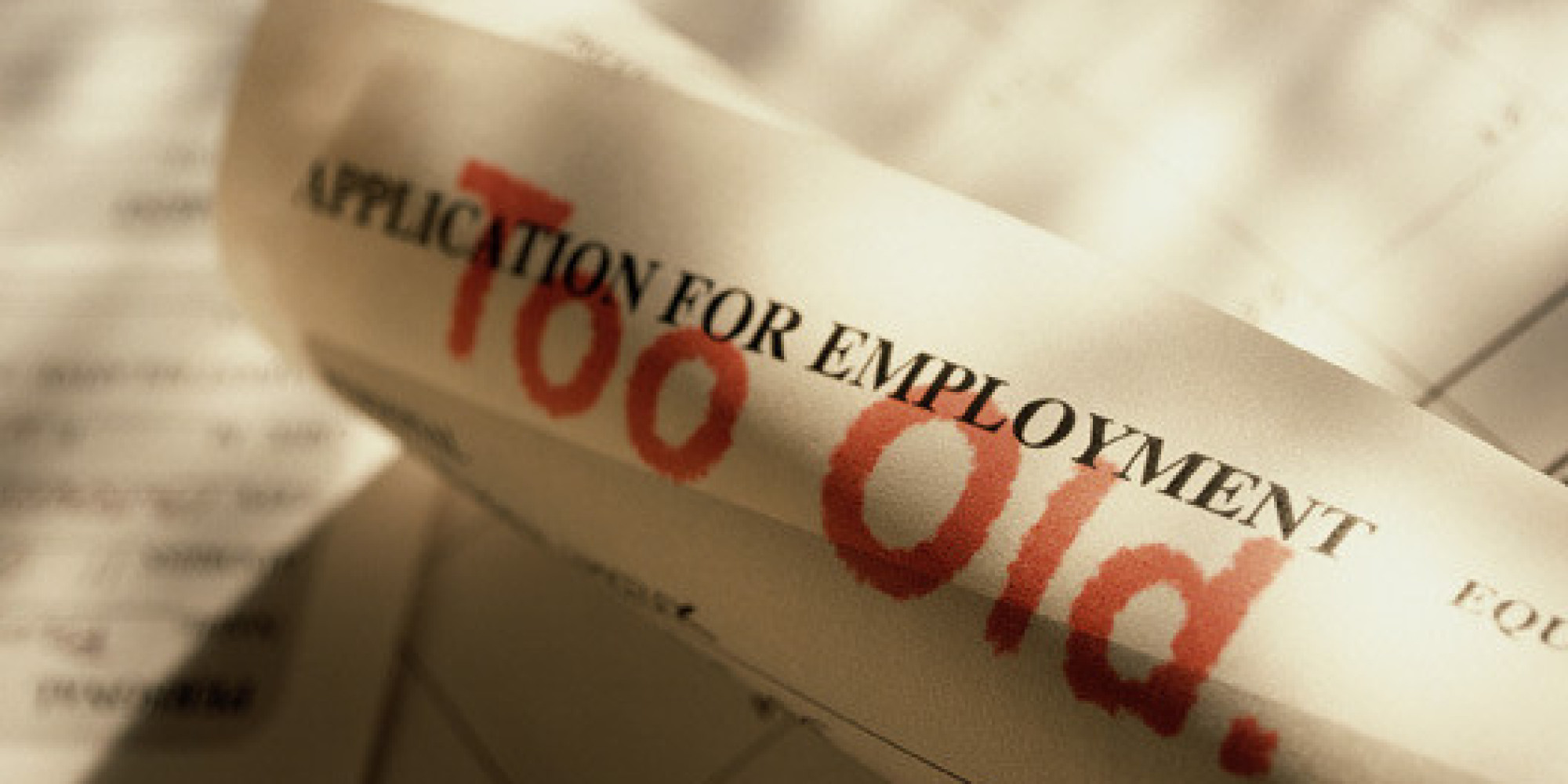Age discrimination needs to be a bigger part of the workforce conversation
Amidst a strong economy — before “social distancing” became part of the American lexicon — employers painted a picture of having to scramble to lure applicants. Nearly 7 in 10 employers reported talent shortages, the worst level ever and a jump of 23 percent from the previous year. That’s more than three times higher than a decade ago.

While employers struggled to fill positions, ProPublica and the Urban Institute were busy analyzing research data from the Health and Retirement Study (HRS), a premier source of multidisciplinary data that researchers use to address important questions about the challenges and opportunities of aging. They discovered that employers are hesitant to hire or retain older workers, potentially limiting their ability to stick around and retire on their own terms. Those unfortunate enough to be laid off have trouble finding a new job and experience long-term unemployment (ProPublica, 2020).
Between the time older workers enter the study and leave paid employment, 56 percent are displaced before they choose to retire. Only 1 in 10 of these workers ever recovers financially, earning much less than they did before their careers were disrupted. Years afterward, they’re still making up for ground lost and find themselves with fewer job prospects (ProPublica, 2020).

An estimated 28 percent of stable, longtime employees sustain at least one damaging layoff by their employers between turning 50 and leaving work for retirement (ProPublica, 2020).
An additional 13 percent of workers who start their 50s in long-standing positions unexpectedly retire under circumstances that suggest they were encouraged to leave. They begin by telling survey takers they plan to keep working for many years, but, within a couple of years, they suddenly announce they’ve retired, amid a substantial drop in earnings and income (ProPublica, 2020).
So where’s the disconnect?
Age Discrimination
A primary culprit is the age-old problem of discrimination.
According to a 2018 American Association of Retired Persons (AARP) survey, 61 percent of older workers said they had either faced or seen age bias in the workplace; and 38 percent believe the practice is “very common.” A similar 2019 survey sponsored by Hiscox, a global specialist insurer, and conducted by Wakefield Research, found that 80 percent of older workers said their career trajectory had been impacted by their age, and 43 percent had left a company because they had experienced or witnessed age discrimination.
Feeding discriminatory hiring practices is the myth that older workers are somehow “washed up” professionally. Youth-obsessed hiring managers carry negative stereotypes about older workers, who are incorrectly viewed as being set in their ways, are less digitally savvy, are too highly compensated to retain, are complacent or unmotivated, and are difficult to manage.
To make matters worse, hundreds of the nation’s leading employers — Amazon, Cox Communications, Goldman Sachs, T-Mobile, and Facebook, to name a few — were found to have placed recruitment ads that excluded older age groups. They also shut out more experienced job applicants on Linkedin and other social recruting platforms. Such disclosures set off a wave of legal proceedings.
According to several civil rights groups — the American Civil Liberties Union, National Fair Housing Alliance, and Communications Workers of America, among others — some corporate recruitment ads were limited to “digital natives,” “recent college graduates,” or “people younger than 38.” Such hiring tactics are unfair, immoral, and illegal.
As part of a legal settlement with the plaintiffs, Facebook announced it would no longer allow businesses to buy targeted ads that potentially discriminate on the basis of race, gender, or age group. Anyone advertising home sales, employment opportunities, or credit offers — three areas where federal law prohibits discrimination in ads — no longer have the option of explicitly aiming ads at people on the basis of those characteristics. This policy change also applies to advertising on Instagram and Messenger, which are Facebook subsidiaries.
Despite this progress, age discrimination is an accepted bias that continues to pervade the hiring process in many organizations.
America’s Aging Demographics
Ironically, the discussion about age discrimination comes at a time when America’s population is growing older.
By 2060, the elderly share of the U.S. population (65 and older), which was 15.2 percent as recently as 2016, is expected to climb to 23.4 percent — an increase of 8.2 percent. Small percentage declines are predicted for the remaining cohorts: -2.1 percent (ages 45-64); -3.1 percent (ages 18-44); and -3.0 percent (under 18).
Compared to the younger population, the 65-plus crowd is the fastest growing segment of the American workforce.

Many people believe there is a strong correlation between America’s aging population and the Baby Boomer generation. That’s understandable, but inaccurate. Falling fertility rates and increases in life expectancy are the driving forces behind these demographic trends. This would have occurred even if the Baby Boom had never taken place. Baby Boomers have influenced the timing of America’s aging — at first, dampening its effect, but on the back end, accelerating it (Concord Coalition and Global Aging Institute, 2020).
Protecting Older Workers Against Discrimination Act (POWADA)
In January, the U.S. House of Representatives voted 261-155 in favor of H.R. 1230, the Protecting Older Workers Against Discrimination Act (POWADA). Sponsored by Representatives Bobby Scott (D-VA) and Jim Sensenbrenner (R-WI), the legislation would restore protections lost in a 2009 U.S. Supreme Court decision that required age to be the sole reason an employer fired or changed a worker’s job in order for the worker to win an age discrimination case.
The legislative process now shifts to the U.S. Senate, where bipartisan companion legislation (S. 485) is sponsored by Senators Chuck Grassley (R-IA) and Bob Casey (D-PA).
Our nation’s premier 50+ organizations — American Association of Retired Persons (AARP) and Association of Mature American Citizens (AMAC) — have thrown their support behind this legislation.
Unfortunately, age discrimination in the workplace is still disturbingly pervasive. Too many companies don’t seem to understand and appreciate the value of older employees. The positive qualities attributed to them — experience, perspective, adaptability, responsibility, commitment — can be tapped in many different ways. Measures such as the POWADA legislation are a step in the right direction toward eliminating discrimination and providing better access to quality jobs for older workers.
Countless workers in their 50s, 60s, 70s and beyond are actively engaged in their careers and enjoy working. Some are impacted by financial pressures caused by the COVID-19 lockdowns or Great Recession; some are caregivers for parents who live longer; others find meaning and self-fulfillment, or work to maintain their emotional well-being.
At 93, Tony Bennett, America’s iconic singer of traditional pop, big band, show tunes, and jazz music, has eleven concerts remaining on his 2020 tour. Franklin Graham, age 67, leads religious crusades and provides political commentary, all the while serving as CEO of the Billy Graham Evangelistic Association and Samaritan’s Purse, an international Christian relief organization. At 85, David McCullough, one of our country’s most beloved historians, known for his Pulitzer Prize-winning biographies of Harry Truman and John Adams, published his 13th book, “The Pioneers: The Heroic Story of the Settlers Who Brought the American Ideal West.” Nancy Pelosi, the 60th and 63rd Speaker of the U.S. House of Representatives, is 80 years old. Next year, the White House is slated to be occupied by one of two candidates who are working well beyond the age that most people start collecting Social Security. The incumbent, President Donald Trump, is nearly 74 years old. His challenger, former Vice President Joe Biden, will turn 78 less than three weeks after the 2020 Presidential Election.
Like many of today’s older workers, these prominent citizens are skilled, proficient, and have a strong work ethic. This leads to a priceless gift — the joy of work.
###

